
Faced with ongoing and emerging challenges that compete for their time, pediatricians are struggling to provide quality care and counseling.

Faced with ongoing and emerging challenges that compete for their time, pediatricians are struggling to provide quality care and counseling.

A study in 512 mother-child pairs from 6 major cities in Canada found that exposure to higher levels of fluoride during pregnancy was associated with lowered intelligent quotient (IQ) scores in their children at the age of 3 to 4 years.
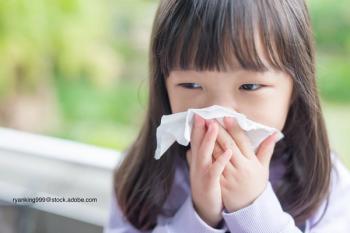
Flu season is in full swing according to the latest data from the Centers for Disease Control and Prevention (CDC). The weekly surveillance indicates that activity is high but has not yet peaked for the season.
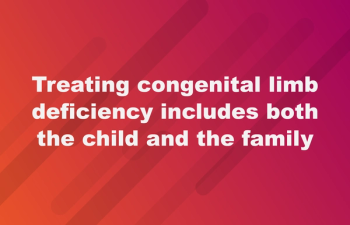
Treating a child with a congenital limb deficiency can be a challenge. It is imperative that the clinician care not only for the child, but the family, and cover not only physical health, but mental health and educational progress. Here are 11 tips to improve care in your practice.
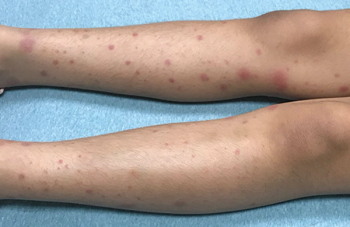
An 8-year-old, previously healthy girl presents to the emergency department (ED) with a rash “that looks likes bruises” and joint pain. The red patchy rash is not painful and not pruritic. What's the diagnosis?
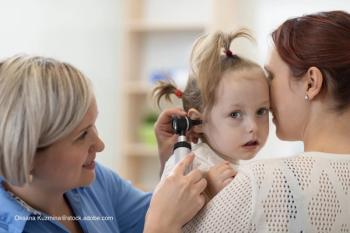
A new anesthesia-free method for placing ear tubes, known as tympanostomy tubes, has been approved by the US Food and Drug Administration and gives clinicians an in-office option for the common procedure.
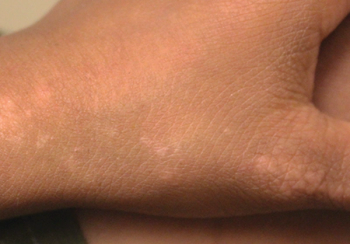
A healthy 6-year-old boy presents for evaluation with a 3-month history of an asymptomatic rash extending from his left thumb to his left wrist. What's the diagnosis?

Palivizumab appears to be effective for reducing respiratory syncytial virus (RSV) in high-risk infants, according to results of a study in Australia.

Teenagers with attention-deficit/hyperactivity disorder (ADHD) or parent-reported “trouble staying focused” are poorer drivers and make more driving errors than their peers during the teenagers’ learning permit period according to recent survey data.

The rising prevalence in childhood obesity increases the risk of teenagers and adolescents developing conditions linked to excess weight like type 2 diabetes, a condition long considered to be a disease for older people. A recent study in JAMA Pediatrics indicates that many adolescents and young adults have prediabetes, the stepping stone to type 2 diabetes.
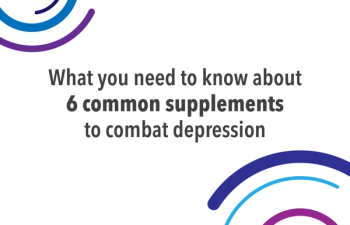
Depression affects approximately 1.9 million children and adolescents and the problems that depression can cause are myriad. Many patients and families choose to use complementary and alternative medicine to treat a vast number of conditions, including depression. Here’s what you need to know about the 6 supplements often used to combat depression.
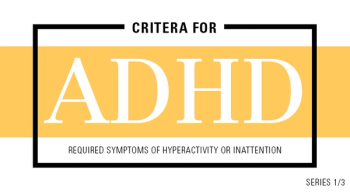
Attention-deficit/hyperactivity disorder (ADHD) and its comorbidities can pose significant challenges for children in your practice. It's imperative to know key symptoms as well as the criteria for the condition.

Clinicians may be able to identify patients at the highest risk of developing type 1 diabetes with a simple saliva test.

Pediatricians, not just parents and teachers, can and should help students who are struggling academically.

Parents and clinicians may sometimes catch the white glare in a child’s eye that signals potentially devastating eye problems, but a new app aims to make the process even easier and more accurate.

As the rate of suicide climbs, the ability to access shows like 13 Reasons Why without parental supervision grows, and social media pushes an impossible quest for perfection, it has become more important than ever for parents, caregivers, and educators to have a good understanding of what depression is and what the signs are.

Low-income pregnant women who receive Women, Infants, and Children (WIC) federal nutrition assistance reduce their offspring’s risk for infant mortality and premature birth.
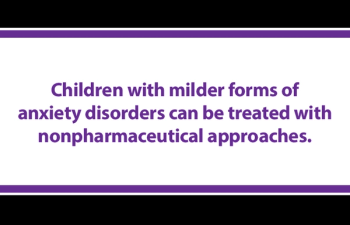
For children who have milder forms of anxiety disorders, the clinician can use nonpharmaceutical treatment options to treat. Here are 7 approaches that can be used to mitigate the effects of a mild anxiety disorder.

Early treatment in acute migraines is important, but behavioral and lifestyle changes may be the best prevention tool in the pediatric population.

A recent report from the US Centers for Disease Control and Prevention shows a positive outcome in the battle against childhood obesity. The number of children and toddlers who are enrolled in the Supplemental Nutrition Program for Women, Infants, and Children (WIC) have shown a downward trend in obesity prevalence from 2010 to 2016.

As advocates for child health, PNPs should actively support the Healthy Babies Bright Futures recommendations to create public health policies that ensure food safety and the removal of toxic heavy metals from infant and toddler food supplies. In fact, our advocacy should go beyond the infant food supply to all foods, to protect the health and well-being of all individuals regardless of age. Toxic metals should not be a part of anyone’s daily dietary intake.
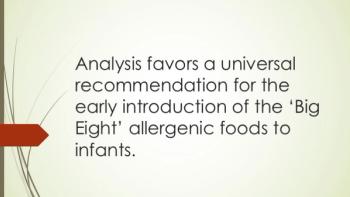
With a vast potential for benefit, studies show this benefit is likely and of no risk at all, and the analysis overwhelmingly favors a universal recommendation for the early introduction of the Big Eight allergenic foods to infants. It should come as no surprise, then, that despite the measured AAP recommendation, numerous experts and institutions advocate this very approach. Here's what 8 have to say.

The year 2019 has seen major advances for pediatric therapeutics in the quest to identify better medicines for children. Here is a summary of what is new from these last months.

Support from fathers trumps that of mothers when it comes to mitigating damage from discrimination over sexual orientation in LGBT teenagers and young adults.

Bug bites, sunburn, and homesickness are the worst things that parents likely expect to happen to their children when they send them off to summer camp. However, a new study in Journal of Allergy and Clinical Immunology: In Practice indicates that camp may not be prepared to recognize and treat anaphylaxis caused by food allergies.

Let’s recap this year’s top devices for tech-savvy pediatricians. Are they on your wish list?
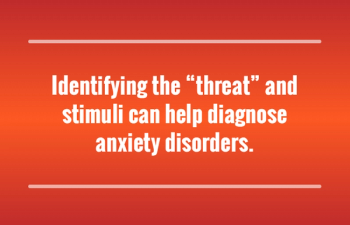
Because appropriate early treatment of anxiety disorders is key to either preventing or reducing a negative impact on a child's life, it's important for the clinician to diagnose the correct disorder by identifying the "threat" and feared stimuli. Here's a look at 7 types of anxiety disorders and their common behaviors.

Discussing vaccination against influenza can go a few different ways. For parents who are either unconcerned with the influenza immunization or who had children who received it in previous seasons but still got influenza, a targeted, evidence-based patient education supported by the influenza immunization and hospitalization data could turn the tide.

Motor skill delays are an early predictor of language delays later in childhood and into adulthood in individuals with autism spectrum disorder.
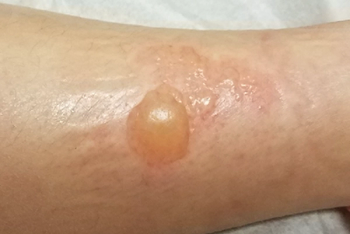
A 9-year-old girl presents with a painful blistering patch on her right leg noted when her mother picked her up from school following an after-school ski club trip. What's the diagnosis?